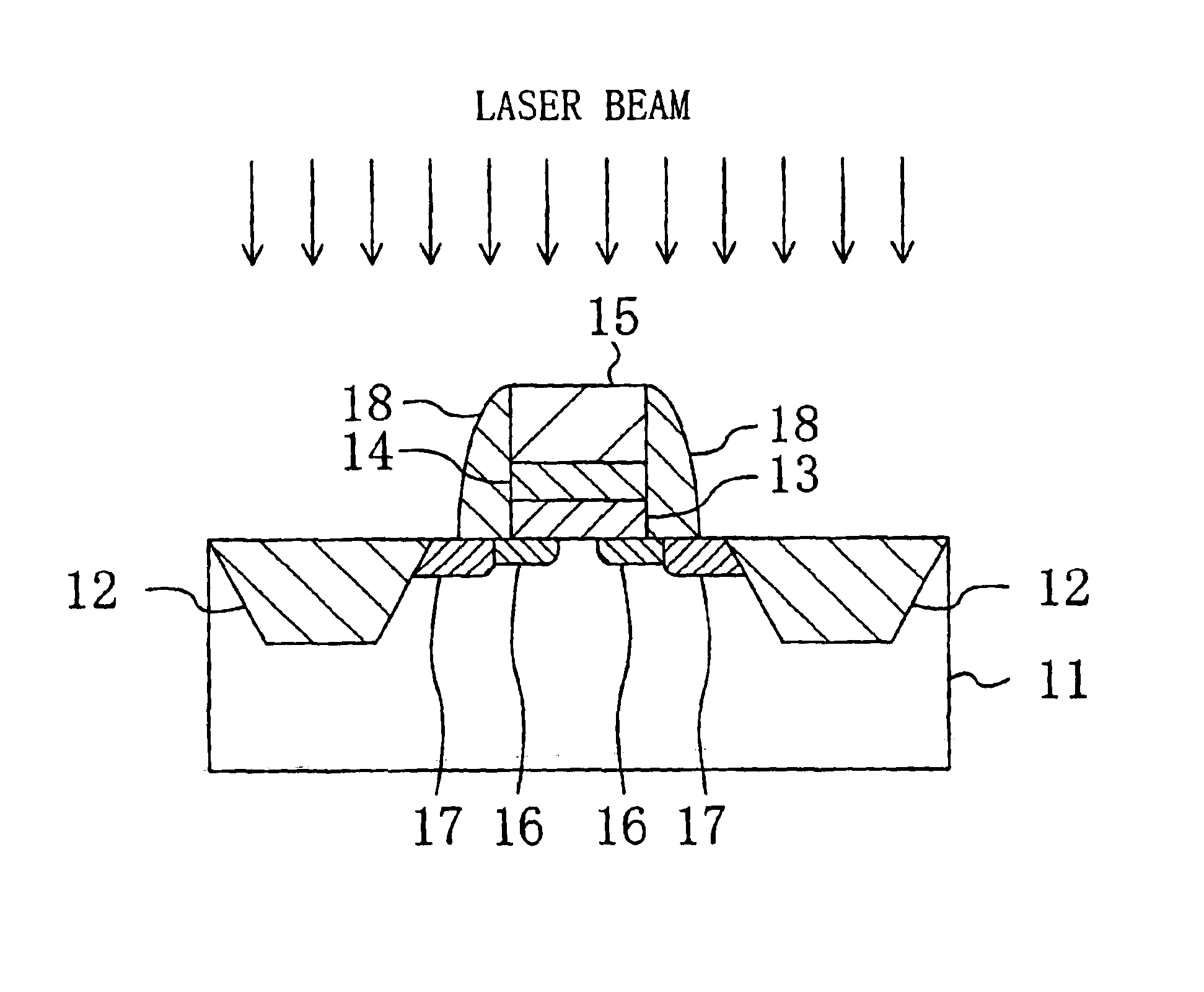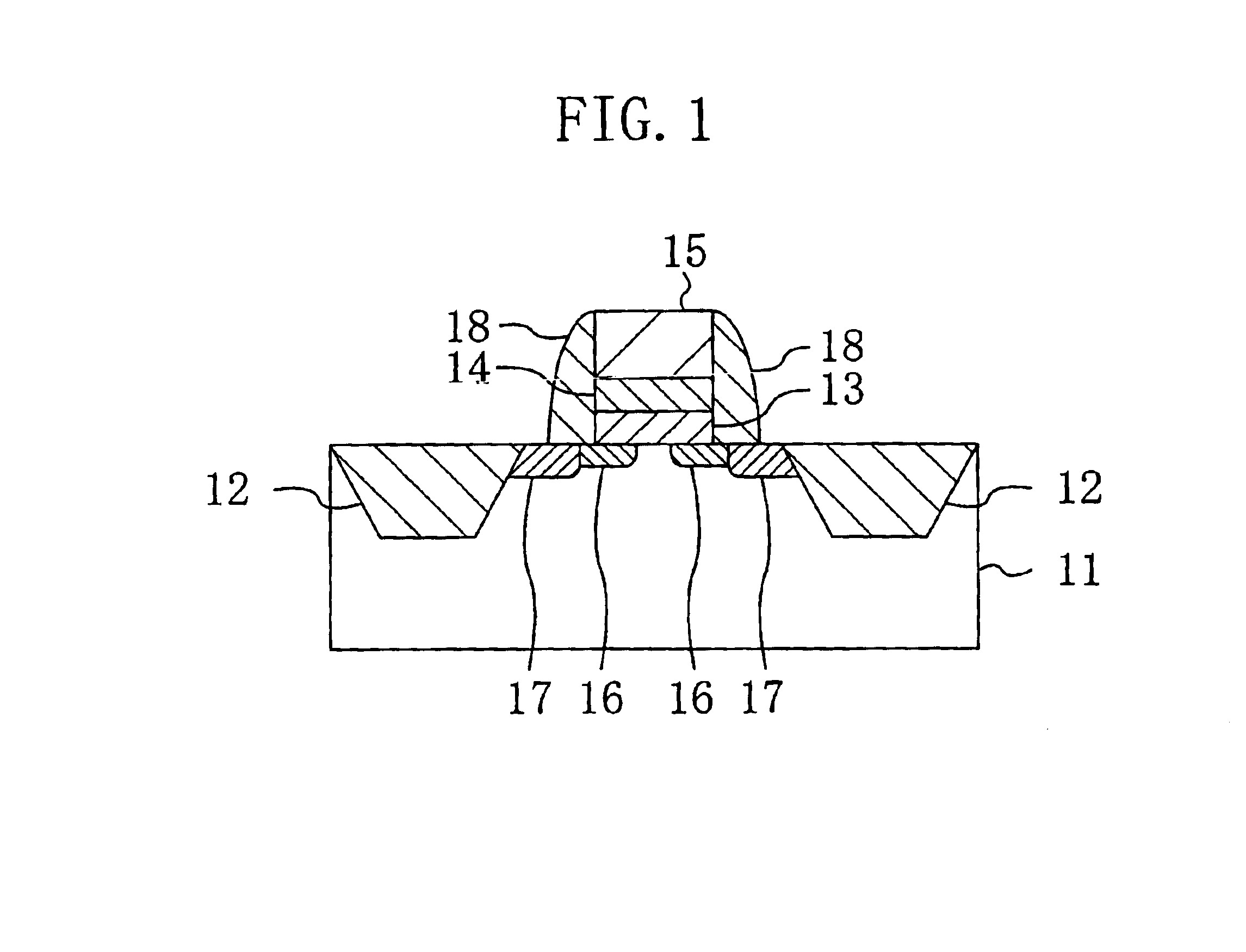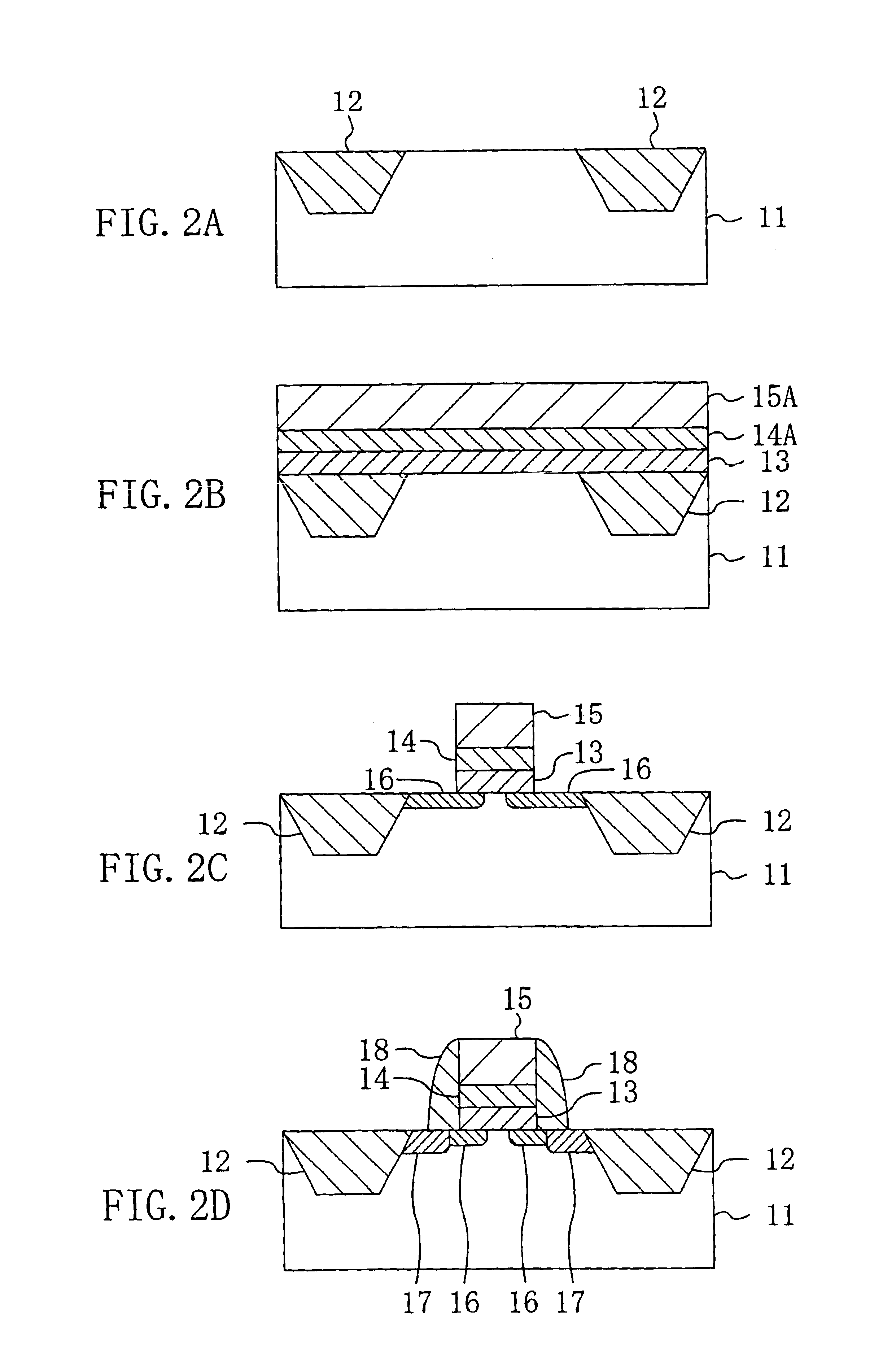Method for fabricating semiconductor device
- Summary
- Abstract
- Description
- Claims
- Application Information
AI Technical Summary
Benefits of technology
Problems solved by technology
Method used
Image
Examples
first embodiment
(First Embodiment)
[0045]A first embodiment of the present invention will be described below with reference to the accompanying drawings.
[0046]FIG. 1 is a drawing illustrating a semicoinductor device according to die first embodiment of the present invention and schematically showing a cross-sectional construction of a MIS transistor.
[0047]Referring to FIG. 1, trench isolation regions 12 of silicon oxide (SiO2) are formed in the upper portion of a semiconductor substrate 11 of p-type silicon (Si), for example. The main surface of the semiconductor substrate 11 is defined by the trench isolation regions 12, and the defined region serves as an element formation region.
[0048]An underlying insulting film 13 of silicon oxide having a thickness of about 0.5 nm, a gate insulating film 14 of high dielectric such as hafnium oxide (HfO2) having a thickness of about 4 nm, and a gate electrode 15 of n-type polysilicon are formed, in the listed order, above the element formation region.
[0049]In a...
second embodiment
(Second Embodiment)
[0068]A second embodiment of the present invention will be described below with reference to the accompanying drawings.
[0069]FIGS. 4A through 4D are sectional views schematically showing process steps of a fabricating method of a semiconductor device according to the second embodiment of the present invention step by step. Also in this description, a semiconductor substrate 11 represents part of a wafer.
[0070]First, as shown in FIG. 4A, trenches are selectively formed by a publicly known technique in the upper portion of the semiconductor substrate 11 of p-type silicon. The formed trenches are filled with silicon oxide to form trench isolation regions 12.
[0071]Subsequently, as shown in FIG. 4B, an underlying insulating film 13 of silicon oxide having a thickness of 0.4 nm is formed by thermal oxidation on the entire surface of the semiconductor substrate 11 including the surfaces of the trench isolation regions 12. On the formed underlying insulating film 13, a hi...
third embodiment
(Third Embodiment)
[0077]A third embodiment of the present invention will be described below with reference to the accompanying drawings.
[0078]FIGS. 5A through 5C are sectional views schematically showing process steps of a fabricating method of a semiconductor device according to the third embodiment of the present invention step by step. The semiconductor device of the third embodiment is a capacitor in a DRAM. Also in this description, a semiconductor substrate 11 represents part of a wafer.
[0079]First, as shown in FIG. 5A, trenches are selectively formed by a publicly known technique in the upper portion of the semiconductor substrate 11 of p-type silicon. The formed trenches are filled with silicon oxide to form trench isolation regions 12. Next, into a region of the semiconductor substrate 11 in which a lower electrode of a capacitor is to be formed, arsenic ions are implanted at an acceleration voltage of about 30 keV and a dose of about 3×1015 / cm2. Using RTA equipment, heat t...
PUM
 Login to View More
Login to View More Abstract
Description
Claims
Application Information
 Login to View More
Login to View More - R&D
- Intellectual Property
- Life Sciences
- Materials
- Tech Scout
- Unparalleled Data Quality
- Higher Quality Content
- 60% Fewer Hallucinations
Browse by: Latest US Patents, China's latest patents, Technical Efficacy Thesaurus, Application Domain, Technology Topic, Popular Technical Reports.
© 2025 PatSnap. All rights reserved.Legal|Privacy policy|Modern Slavery Act Transparency Statement|Sitemap|About US| Contact US: help@patsnap.com



